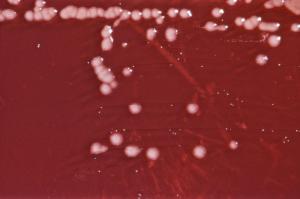
Most water treatment plants use chlorine to clean tapwater. The main drawback to this is that the process produces carcinogens. The chlorine isn't totally effective either, leaving parasites like Giarrdia and Cryptosporidium unaffected by the treatment.
A faculty/student team at Tel Aviv University has determined the optimal UV wavelength to keep water clear of microorganisms. Bio-fouling, which refers to bacteria's tendency to stick to surfaces, costs governments billions of dollars each year.
Using special multi-wavelength-emitting lamps, researchers investigated 220-280 nm wavelengths, discovering the 254-270 nm range to be the best at cleaning water of Pseudomonas aeruginosa bacteria.
This UV "zap" doesn't just kill microorganisms. It damages their DNA, which helps prevent re-growth. This is where it distinguishes itself from the chlorine.
So far, this technique has no known negative effect on the water.
The researchers advocate using UV light in conjunction with small amounts of chlorine for a comprehensive, more effective way to treat drinking water.



Comments
I use a portable UV lamp to treat drinking water when I am backpacking. Lightweight and reliable - even has a solar charger to increase versatility. Wonder how cost-effective this is for a large scale operation.
Robert, that's really resourceful. Is that the main purpose for the UV lamp?
It is specifically for water treatment. An alternate to hiking with chlorine or iodine tablets and more effective on smaller threats than filters. And doesn't change the taste at all - though that can be good or bad depending on where you are. It is about the size of a large marker. Has a sensor that only allows the lamp to be turned on in water and with a timer that is timed to treat 1-L or 0.5-L per batch.
Does your UV lamp kill everything that could harm you - bacteria, viruses, parasites...? This thing requires quite a charge, does it?
As long as the water is relatively clear (for murky water there is some pre-filtering required) it gets everything biological (no chemical removal or breakdown). It doesn't take anything out of the water, but renders the biologicals inactive. Most other systems would require 2 steps for this - filter for bacteria and parasites and then chemical for the viruses (a filter small enough for viruses could be a little tough on the trail). This way is also faster. As for the charge, it runs on 2 camera-style batteries - I believe the size is CR123 (or CR123A). New batteries should last around 200 treatments (at 1L each). The rechargeable versions last for fewer (maybe 150 or more) treatments but can be paired with the solar charger for backup. The lamp is supposed to last 15,000 or 20,000 treatment (I would have to re-check my manual) as long as it isn't dropped too hard or anything like that.